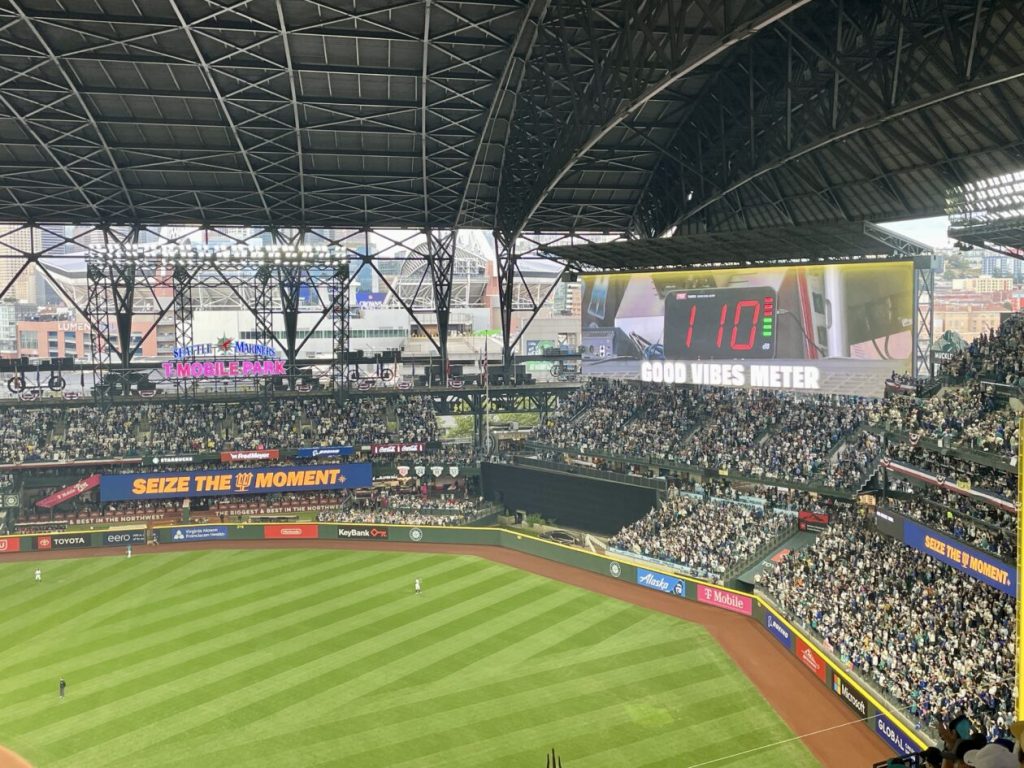THE GROUND LITERALLY SHOOK: HOW SEATTLE FANS CREATED SEISMIC ENERGY DURING PLAYOFF VICTORY
The Seattle Mariners’ dramatic 15-inning playoff victory against the Detroit Tigers on Friday wasn’t just emotionally earth-shaking for fans—it literally made the ground move. When Leo Rivas mentioned after the game that “it felt like the ground was shaking every inning,” he wasn’t simply being poetic. Scientists from the Pacific Northwest Seismic Network (PNSN) had installed a special sensor inside T-Mobile Park specifically to measure the seismic energy generated by 47,025 passionate fans during this pivotal American League Division Series game. The sensor, affectionately nicknamed “Richter Rizzs” after beloved Mariners broadcaster Rick Rizzs, captured real-time data of the stadium’s movement as Seattle secured their first trip to the American League Championship Series since 2001.
The scientific effort came together remarkably quickly, with PNSN Director Harold Tobin explaining that T-Mobile Park sits too far from their regular seismic stations for accurate measurement. Inspired by catcher Cal Raleigh’s comments about feeling the stadium vibrate during an earlier playoff game, the team worked rapidly to install a research-grade “strong-motion seismometer” inside the ballpark. “Our amazing team pulled off the setup in just two days,” Tobin shared with GeekWire. The scientists streamed a live feed throughout the game, allowing viewers to witness spikes in seismic activity corresponding to crucial game moments. The most significant ground movement predictably coincided with Jorge Polanco’s game-winning RBI single in the 15th inning—a moment that unleashed a thunderous celebration nearly five hours after the first pitch.
This isn’t the first time Seattle sports fans have registered on seismic instruments. The PNSN has previously monitored Seattle Seahawks games, most famously capturing the legendary “Beast Quake” when Marshawn Lynch’s touchdown run in 2011 created measurable seismic activity. The organization has also measured ground movement during concerts, making this baseball monitoring a natural extension of their public engagement efforts. While the primary purpose was entertainment rather than research, Tobin noted that structural engineers do use similar data to understand the stresses and strengths of buildings, including stadiums. The vibration measurements provide fascinating insights into how collective human emotion and movement can translate into physical energy.
The Mariners’ victory itself proved historic, advancing the team to their first ALCS in over two decades. The marathon 15-inning contest represented playoff baseball at its most dramatic, with momentum swings, defensive highlights, and mounting tension that kept fans on their feet for hours. The crowd’s energy built throughout the afternoon and into the evening, with each crucial pitch and defensive play eliciting reactions that registered on the seismometer. The stadium became progressively louder as the extra innings mounted, creating a pressure cooker atmosphere that finally exploded with Polanco’s clutch hit. The “Good Vibes Meter” displayed inside T-Mobile Park tracked decibel levels throughout, but the seismic measurements added a scientific dimension to quantifying the fan experience.
What makes this scientific endeavor particularly meaningful is how it tangibly connects the emotional experience of sports fandom with measurable physical phenomena. Seattle’s baseball renaissance has brought new energy to a city with a complicated sports history, and the seismic readings provide objective evidence of the community’s passionate investment. The nickname “Richter Rizzs” for the sensor cleverly bridges the gap between science and sports culture, honoring a broadcaster who has narrated the team’s highest and lowest moments for decades. The data visualization created an additional layer of engagement for fans following along at home, allowing them to see real-time confirmation of the energy filling the ballpark during crucial moments.
Looking ahead to the American League Championship Series, the PNSN team plans to continue monitoring when the playoff series returns to Seattle next week. “Now we are ready to ‘Seis The Moment’ when the ALCS games come to Seattle,” Tobin quipped, incorporating the Mariners’ late-season rallying cry of “Seize the Moment.” If the Division Series victory generated significant seismic activity, one can only imagine what might register should the Mariners advance even deeper into October. The scientific monitoring adds another fascinating dimension to playoff baseball in Seattle, reinforcing how sports can unite a community in ways powerful enough to make the earth move—not just metaphorically, but measurably. As the Mariners continue their postseason journey, both fans and scientists will be watching closely to see if new seismic records might be set along with athletic ones.


